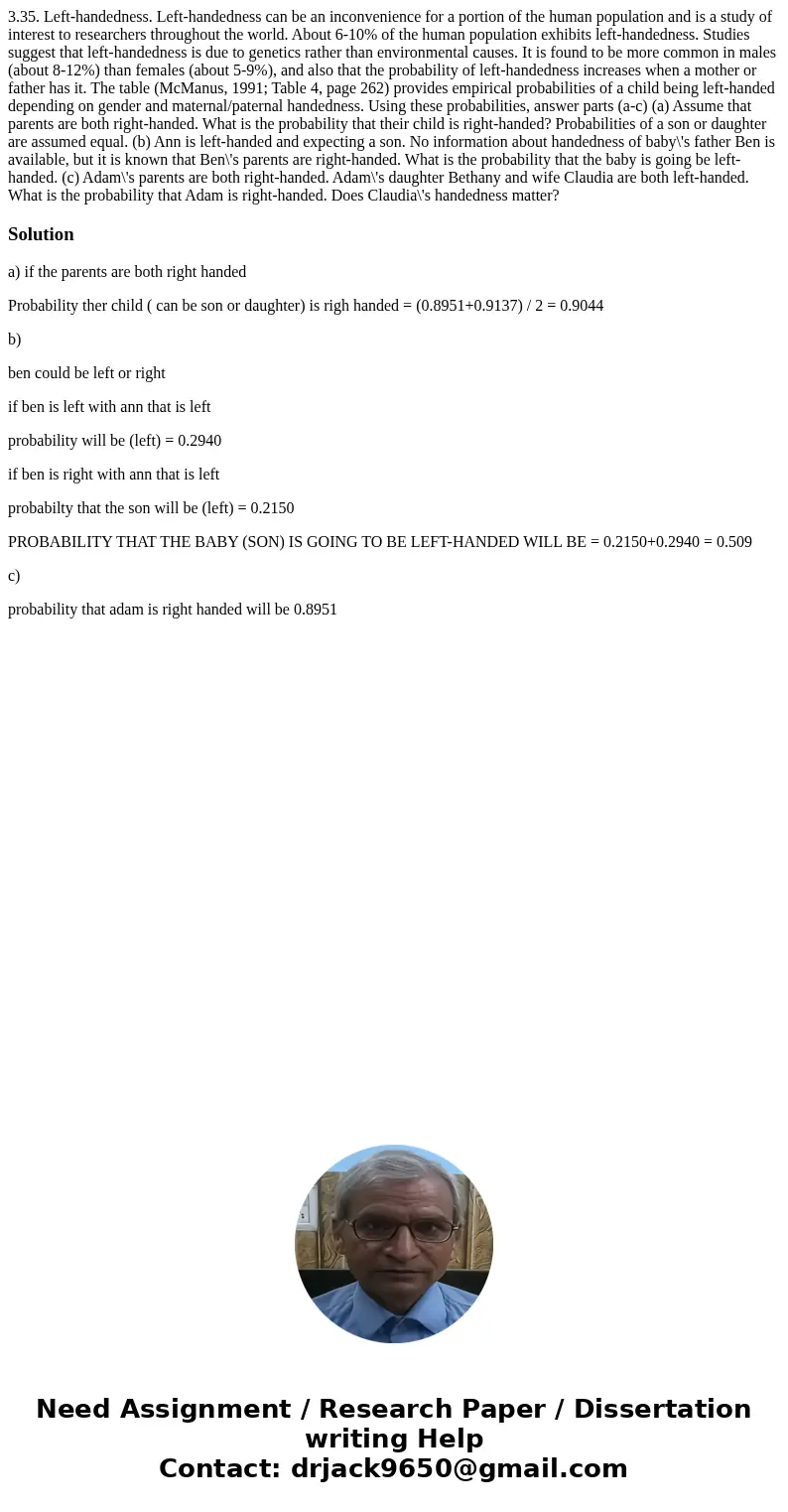335 Lefthandedness Lefthandedness can be an inconvenience fo
3.35. Left-handedness. Left-handedness can be an inconvenience for a portion of the human population and is a study of interest to researchers throughout the world. About 6-10% of the human population exhibits left-handedness. Studies suggest that left-handedness is due to genetics rather than environmental causes. It is found to be more common in males (about 8-12%) than females (about 5-9%), and also that the probability of left-handedness increases when a mother or father has it. The table (McManus, 1991; Table 4, page 262) provides empirical probabilities of a child being left-handed depending on gender and maternal/paternal handedness. Using these probabilities, answer parts (a-c) (a) Assume that parents are both right-handed. What is the probability that their child is right-handed? Probabilities of a son or daughter are assumed equal. (b) Ann is left-handed and expecting a son. No information about handedness of baby\'s father Ben is available, but it is known that Ben\'s parents are right-handed. What is the probability that the baby is going be left-handed. (c) Adam\'s parents are both right-handed. Adam\'s daughter Bethany and wife Claudia are both left-handed. What is the probability that Adam is right-handed. Does Claudia\'s handedness matter? 
Solution
a) if the parents are both right handed
Probability ther child ( can be son or daughter) is righ handed = (0.8951+0.9137) / 2 = 0.9044
b)
ben could be left or right
if ben is left with ann that is left
probability will be (left) = 0.2940
if ben is right with ann that is left
probabilty that the son will be (left) = 0.2150
PROBABILITY THAT THE BABY (SON) IS GOING TO BE LEFT-HANDED WILL BE = 0.2150+0.2940 = 0.509
c)
probability that adam is right handed will be 0.8951

 Homework Sourse
Homework Sourse